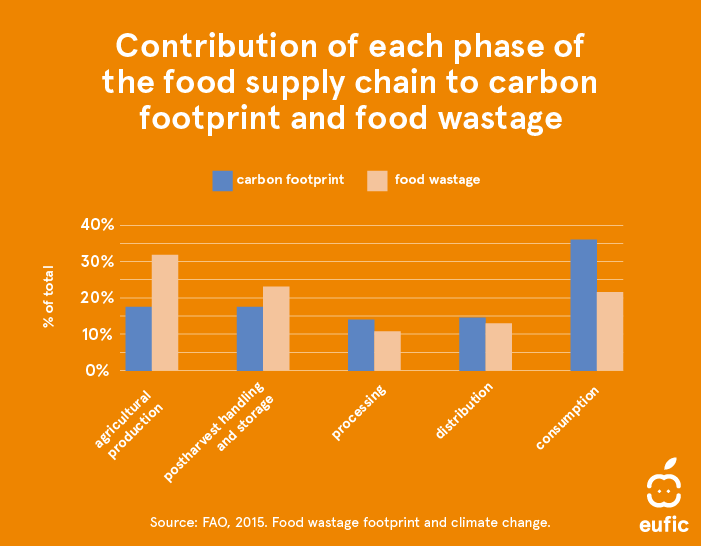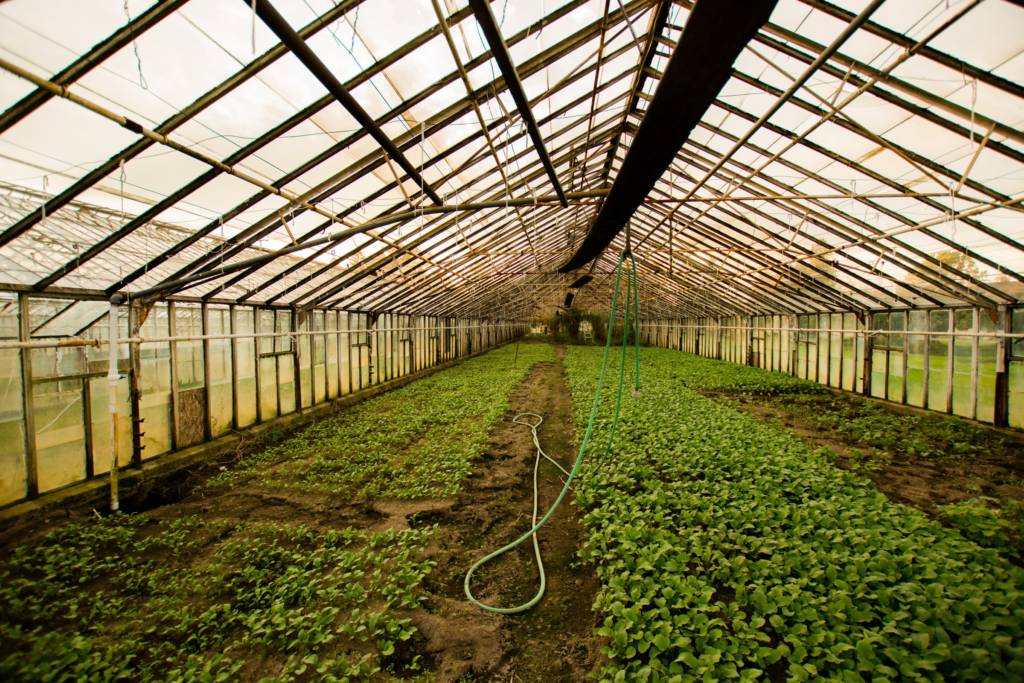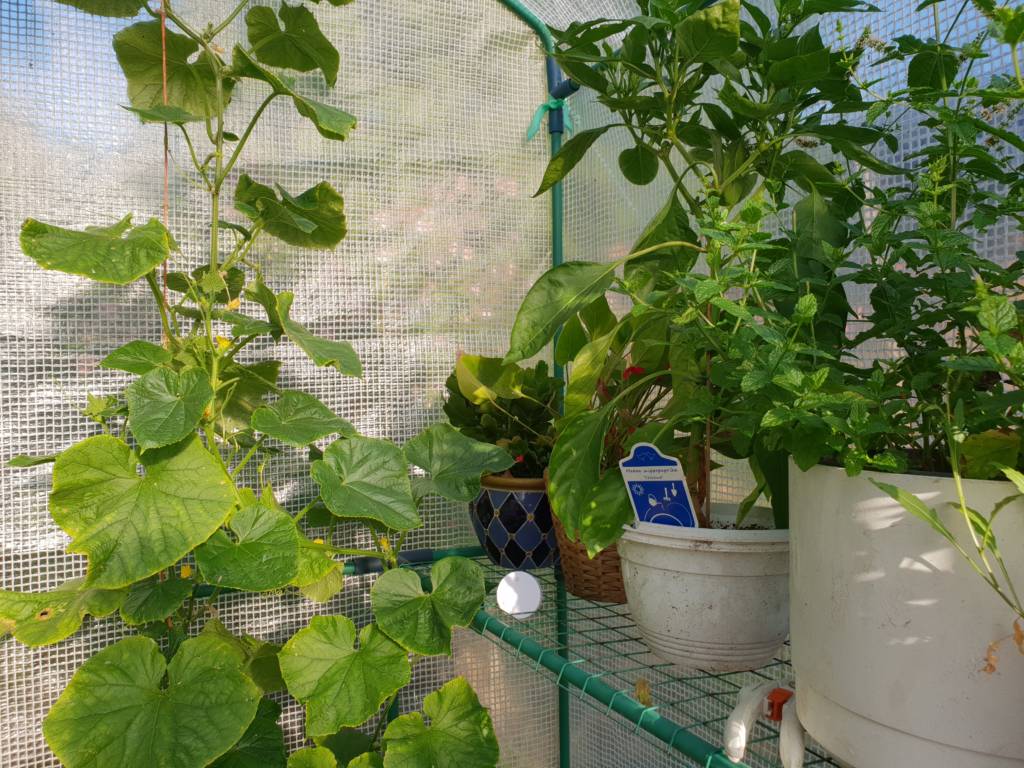Human beings, as well as all living creatures, need food to survive. Most of our food is grown in the fields, either directly or indirectly. So, we can most definitely agree that growing food effectively is our lifeline. One of the most important inventions for humans has been the greenhouse. Greenhouses are places where food can be grown all year round, enable security in the food supply chain and eliminate our dependence on weather conditions such as droughts or other extreme weather events that have the capacity to destroy entire crops.
Food waste is a serious problem. In Europe, roughly 33% of all edible food is wasted. If the whole world’s food waste would be a country, it would be the third largest greenhouse gas emitter in the world! That is 8% – 10% of total greenhouse gas emissions. According to Eufic, a European NFO specialising in fighting against food waste, The agriculture industry causes approximately 33% of total food wastage. Generally, problems in production and complicated economic situations are the main reasons for food waste.
In this article, we will discuss the following:
- Why reducing food waste is important
- How food producers can lower their food wastage and save money
- How smart greenhouses are a solution
But without further ado, let’s head straight into the subject!

Benefits of reducing food waste
As we have already discussed the vastness of food waste in general, we can start to look for more detailed information about the problems of food waste. These problems include greenhouse gases, lost resources and lost financial opportunities.
Greenhouse gases from food waste
Methane is one of the elements causing the greenhouse effect in our atmosphere. It is more harmful than the more common carbon dioxide as it absorbs more heat. Methane is produced if food waste is not composted correctly and is transferred to landfills. In a landfill, food waste is treated similarly as other types of waste and therefore it will not compost properly. In landfills, organic waste will release methane as well as other harmful gases. With proper composting, food waste would produce less harmful gases, and the nutrients still present in the food turn into new fertilisers.
Losing resources due to food waste
Growing food requires resources such as fresh water, nutrients, labour, energy and transportation. All of these are necessary to produce food for humans and animals to eat. Our planet does not have unlimited amounts of resources. Hence, we should be raising awareness about using them in excess.
Throwing food away not only wastes the food, but also the resources that went into its production. It is especially true in areas with a limited fresh water supply. And, commonly producers use this fresh water for growing crops, leaving local communities with less possibilities to drink potable water. If a crop grown in these areas becomes waste, then the local communities have given up their precious resources for nothing.
Financial benefits of reducing food waste
For agricultural businesses, food waste represents a direct loss of profits. Being able to detect problems in greenhouses is extremely beneficial, as many crops can die from improper conditions, such a single frost for example. Also, problems in logistics can create food waste, if the cold-chain is interrupted. Then, all the labour and used resources are likewise wasted in a matter of hours.

How to reduce food waste in agricultural industries
As the agricultural industry is the biggest source of food waste, they have the greatest opportunity to reduce it. Consumers on the other hand are responsible for the majority of the greenhouse gas emissions associated with food waste. Therefore, we consumers cannot blame the agricultural industry alone, and also need to take responsibility. In this article, however, I will be focusing on the role of the production phase in food wastage.
What causes food waste in agriculture?
There are numerous possibilities that could cause problems in agriculture. Floods, drought, pests, low temperatures, animals, etc… Also, once the crops are harvested, problems could occur in storing, handling or distribution. Usually, problems arise from improper environmental conditions, such as excessively cold or hot temperatures.
No one can control the weather, so it is important to know the conditions of crops at all times. In colder climates, most plants grow in greenhouses, as the summer season is relatively short. These greenhouses are heated and the conditions are tailored for specific needs. Hence, if a heating element breaks down, the whole crop can spoil. Sometimes, a door left open by mistake can be the source of crop damage.
Also, unfavourable economic situations can cause farmers to leave their crops unharvested as selling these would not cover the expenses of labour and logistics involved. That, however, is an issue best left to politicians and economists.
Solutions for greenhouse monitoring
As there are pesticides to take care of pests, there are also IoT-sensors for greenhouse environment control. With rather inexpensive sensors and a gateway, you can be aware of your greenhouse’s conditions round the clock. We all know that a farmer’s job is not the typical 9 to 5 office job, but rather a full-time occupation. Therefore, being able to track crops with a mobile phone wherever you are, is a blessing.
There are plenty of different sensors on the market, but one of the most convenient devices is the RuuviTag and its Gateway. It is designed in Finland and produced in the E.U.. RuuviTag fits in all greenhouses and its accuracy is top of the range, measuring air temperature, air humidity and atmospheric pressure with great precision. You can also create customisable alarms to suit your needs.
For example, you can set an alarm when the temperature of a greenhouse drops below 15 C. An alarm will trigger on your mobile device and you can check what has caused the issue. Humidity is also important for plant growth, learn more about it here.

Other possible solutions can include either Netatmo’s sensors or Govee sensors. As long as the sensor can measure temperature and humidity, it can prevent suboptimal growing conditions.
Reducing food waste with IoT from the soil to the store
IoT-technology enables live tracking of different goods. With these smart sensors, you could assign one for each crop. It can follow the crop as it grows, and also when it is processed and transported. You can collect and analyse data for the entire lifespan of this crop and you can be certain that the food is in proper conditions at all times. If it has become spoiled, you can access this data and figure out where the problem has occured. This will help tremendously to try to tackle the problem in the future.
In addition, if you know your greenhouse’s conditions at all times, you can save on energy costs. Maybe you do not need to keep the greenhouse as warm as it is, or you can find leaks that cause temperatures to drop in certain places.
In Conclusion
Food waste is a critical problem in our modern society. With scarce resources, we should not be wasting all this edible food along with the resources that went into its production. In addition, our atmosphere cannot handle all the gas emissions that we produce as a result of our modern lifestyles, which include massive food waste.
IoT-devices can help us fight the problem of food waste especially at the greenhouse phase, followed by storage and transportation. With long-lasting batteries, weather durability and useful hardware, devices such as the RuuviTag and its Gateway can ensure the health of the whole supply chain of food production. These smart sensors could bring in more profits to farmers with increased productivity by reducing food and resource waste.
Also, these sensors can help consumers to store food more effectively. All in all, everyone should pay at least some attention to reducing food waste. Do not buy excessive food that you are not going to eat.
Do you want to reduce food waste?
RuuviTag is a farmer’s best friend. Improve your productivity with these inexpensive sensors and join the battle of fighting food waste and climate change with us!
How and where is food wasted?
Food is wasted during its production from soil to consumers. Agriculture is the biggest generator of food waste but consumers have the biggest carbon footprint.
What causes food waste?
Most common reasons for food waste are spoilage, overproduction and lack of knowledge.
How is food waste a problem?
Wasting food is equal to wasting earth’s scarce resources. When food is thrown away, all the water, work and energy that have been used to produce it will turn to be useless. Also, food waste in landfills causes methane to be released to the atmosphere, which is one of the greenhouse gases warming our climate.